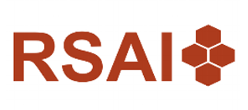The use of social media in EU policy communication and implications for the emergence of a European public sphere
Cohesion policy is the European Union’s (EU) main investment policy and seeks to strengthen economic, social and territorial cohesion. While accomplishments in this regard are constantly measured, European citizens are not always aware of the policy’s impact and the role the EU plays therein. This is especially relevant as the communication of EU policies is central to the emergence of a European public sphere, an acknowledged condition for European integration. In this paper, we aim at advancing research in this regard through the analysis of cohesion policy communication on the social media channels of ten Local Managing Authorities (LMAs) responsible for managing and communicating structural funds at the local level. By building on a bottom-up construction of shared meaning structures through semi-automatic analysis techniques, we make the following three observations: first, social media communication is indicative of ‘horizontal Europeanization’; second, Europeanization occurs both in the form of the spontaneous amalgamation of shared discontent expressed by citizens and the institutionalization of top-down EU communication measures adopted by LMAs; and third, a cluster of topics articulated internationally and showcasing a negative attitude towards the EU funding scheme suggests that, counter-intuitively, Euroscepticism seems to facilitate the emergence of a European public sphere.
Check other articles from the issue Linkages and channels between Cohesion Policy and European Identity – Spring 2020 or from other issues.


